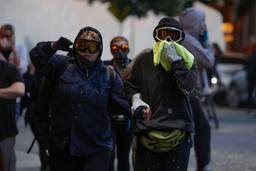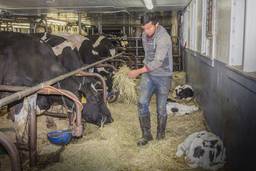Volcanoes can radically alter climates. We know that. But we are now learning that the reverse also holds: Climate change is causing volcanic eruptions, earthquakes and tsunamis.
Evidence that volcanoes can heat or cool the climate dates back millennia. In recent geological time, particles from the 1815 Mount Tambora eruption in Indonesia circled the globe, blocking out significant sunshine for months and contributing to “the year without summer.” In 1816 the northern hemisphere was hit by unprecedented frosts every month, which caused massive crop failure and hundreds of thousands of deaths. Volcanoes can also promote warming though CO2 emissions, although at far lower levels than human activity.
Scientists are now warning that global warming will likely accelerate volcanic activity, which will in turn intensify climate change. Many of the world’s volcanoes are topped by glaciers, which can be hundreds of meters thick, with each cubic meter of ice weighing nearly a ton. As this massive layer of ice melts, built-up pressure on the rock below is released, shifting the earth. Magma can leak through cracks, and when it contacts the remaining ice, the molten rock explodes into globe-circling ash clouds.
Also vulnerable to climate change are the more than 60 percent of the world’s active volcanoes that reside on continental margins and island chains. As the planet warms, the weight of rising sea levels will warp faults, stimulating eruptions and quakes.
“Not every volcanic eruption and earthquake in the years to come will have a climate-change link,” Bill McGuire, professor of Geophysical Hazards at University College (UK), told New Scientist. “Yet as the century progresses, we should not be surprised by more geological disasters as a direct and indirect result of dramatic changes to our environment.”
University of Iceland volcanologist Freysteinn Sigmundsson doubted a climate link to the April eruption of Eyjafjallajökull, describing its capping glacier as too light and small.
But what the eruption did show was how the interaction of glaciers and volcanic fires not only produces massive ash clouds, but melts great hunks of the glacier itself. After the eruption, flash floods ruined surrounding farmland.
Even without volcanic activity, glacial melting is linked to flooding through glacial lake outburst flood (GLOF). The unlovely acronym describes a phenomenon that is increasing around the world: runoff from melting glaciers gathers in newly formed or greatly expanded lakes retained by unstable banks. Some have already burst; one roiling flood was recorded moving at 15,000 cubic meters per second – more than five times the volume of Niagara Falls.
In the 1950s the area below Nepal’s Trakarding glacier, for example, was a small pond. Now, as the glacier shrinks, Tsho Rolpa Lake is more than 2 miles long and 500 feet deep. If the bank breaks, as many scientists warn it will, 2 billion cubic feet of water would sweep away villages, threatening some 10,000 lives.
Norbu Sherpa survived a GLOF that raged for hours through the Nepali village of Ghat in 1985. “My family and I were all in our house when we heard a big explosion [and saw] a big black stream of mud, including rocks and trees, rushing down the mountain,” he told the World Wildlife Federation. The GLOF destroyed crops and an almost completed $1.5 million hydropower plant.
The Himalayan glaciers are rapidly disappearing. Nepal alone now has almost 9,000 glacial lakes, and the International Center for Integrated Mountain Development warns that 204 are at risk of GLOF.
Less sudden but more catastrophic is what happens next, after the Himalayan glaciers and much of the high snows are gone. The meltwater now feeds 12 rivers that supply more than two billion people – nearly one-third of humanity – with water. The loss of this water source not only threatens economies, culture and community – it imperils national and global security. Water shortages, droughts, floods, crop failures and famine will follow and the ripples of disaster will spread around the world, driving up food and commodity prices, fueling tribal and national conflicts and water wars, and creating waves of climate refugees.
At the same time, if researchers are right about the impact of glacier melt and rising seas, volcanic and earthquake activity will accelerate. We are in for a hell of a ride.









